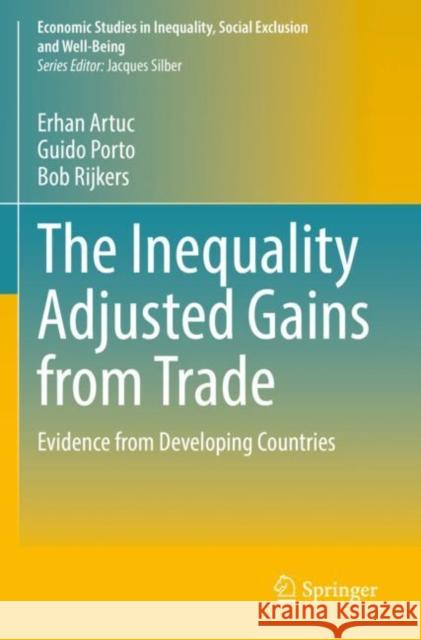The Inequality Adjusted Gains from Trade: Evidence from Developing Countries » książka
The Inequality Adjusted Gains from Trade: Evidence from Developing Countries
ISBN-13: 9783030930622 / Angielski / Miękka / 2023 / 155 str.
The Inequality Adjusted Gains from Trade: Evidence from Developing Countries
ISBN-13: 9783030930622 / Angielski / Miękka / 2023 / 155 str.
(netto: 384,26 VAT: 5%)
Najniższa cena z 30 dni: 385,52
ok. 22 dni roboczych
Dostawa w 2026 r.
Darmowa dostawa!
This volume examines the relationship between trade liberalization policies and income inequality in developing countries. Using survey data for 54 developing countries, the book explores the potential trade-off between the gains from trade and the distribution of those gains and provides a quantification of the inequality-adjusted welfare gains from trade.The book begins with an introduction to the model and its methodology. Chapter 2 sets up the model and derives the formulas for the welfare effects of trade policy. Chapter 3 uses the tariff data and the survey data to estimate those welfare effects in 54 countries. Chapter 4 discusses the gains from trade and their distribution. Chapter 5 evaluates and quantifies the trade-off between income gains and inequality costs of trade. Chapter 6 presents robustness tests and results from alternative models of the impacts of trade. The last chapter reviews the Household Impacts of Trade database and dashboard, which provides data for replication and a platform that allows researchers to simulate agricultural tariff policy shocks.Providing a comprehensive empirical analysis of the effects of trade policy on inequality in developing countries, this volume will be of interest to researchers and students of economic inequality, development, and international trade as well as policymakers interested in the inequality and poverty consequences of trade policy.
This volume examines the relationship between trade liberalization policies and income inequality in developing countries. Using survey data for 54 developing countries, the book explores the potential trade-off between the gains from trade and the distribution of those gains and provides a quantification of the inequality-adjusted welfare gains from trade. The book begins with an introduction to the model and its methodology. Chapter 2 sets up the model and derives the formulas for the welfare effects of trade policy. Chapter 3 uses the tariff data and the survey data to estimate those welfare effects in 54 countries. Chapter 4 discusses the gains from trade and their distribution. Chapter 5 evaluates and quantifies the trade-off between income gains and inequality costs of trade. Chapter 6 presents robustness tests and results from alternative models of the impacts of trade. The last chapter reviews the Household Impacts of Trade database and dashboard, which provides data for replication and a platform that allows researchers to simulate agricultural tariff policy shocks. Providing a comprehensive empirical analysis of the effects of trade policy on inequality in developing countries, this volume will be of interest to researchers and students of economic inequality, development, and international trade as well as policymakers interested in the inequality and poverty consequences of trade policy.











